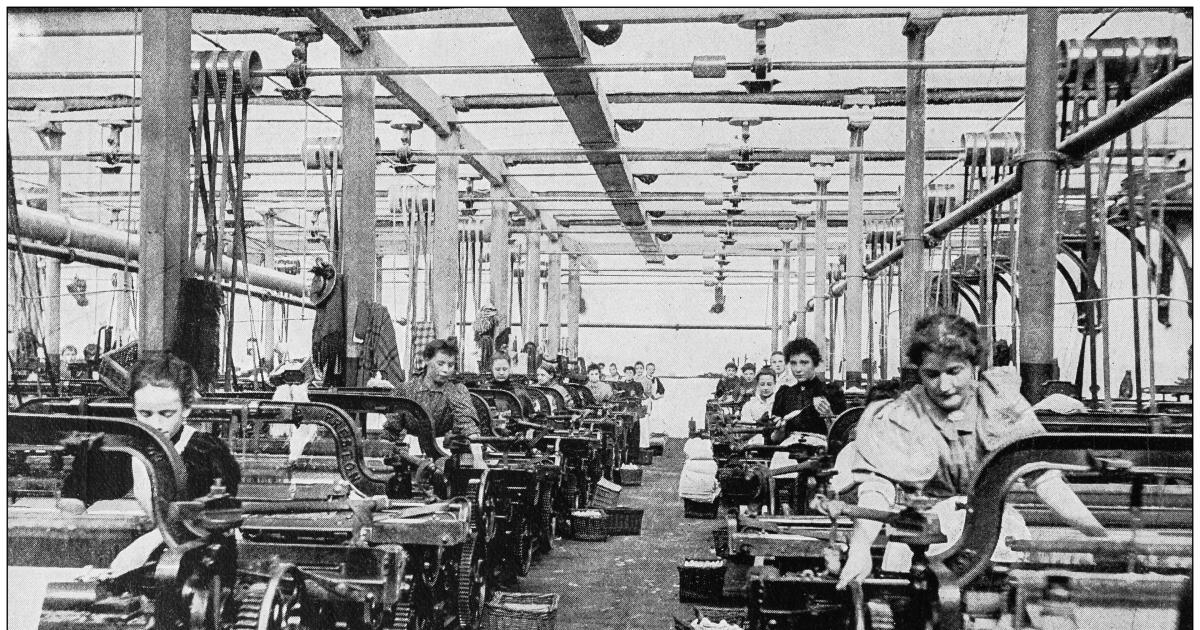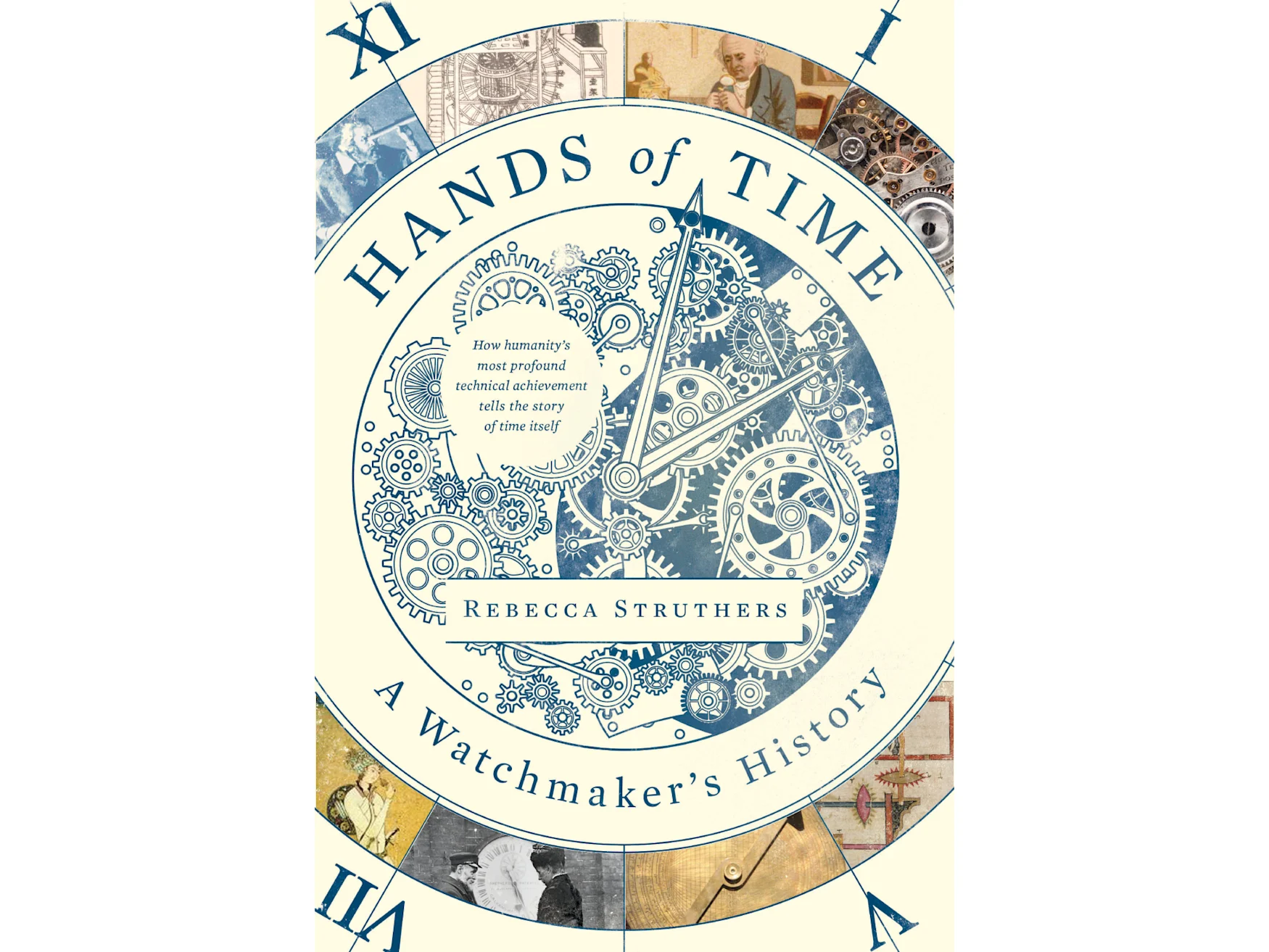
America did not get round to actually addressing little one labor till the late ’30s when Roosevelts New Deal took maintain and the Public Contracts Act raised the minimal age to 16. Earlier than then, children might typically stay up for spending the majorities of their days doing among the most harmful and delicate work required on the manufacturing facility ground. It is one thing today’s kids can look forward to as well.
In Hands of Time: A Watchmaker’s History, honored watchmaker Rebecca Struthers explores how the follow and expertise of timekeeping has formed and molded the fashionable world by her examination of historical past’s most acclaimed timepieces. Within the excerpt under, nonetheless, we check out 18th- and Nineteenth-century Britain the place timekeeping was used as a method of social coercion in protecting each grownup and little one staff pliant and productive.

HarperCollins
Excerpted from Hands of Time: A Watchmaker’s History by Rebecca Struthers. Printed by Harper. Copyright © 2023 by Rebecca Struthers. All rights reserved.
Though Puritanism had disappeared from the mainstream in Europe by the point of the Industrial Revolution, industrialists, too, preached redemption by arduous work — lest the Satan discover work for idle palms to do. Now, although, the objective was productiveness as a lot as redemption, though the 2 had been typically conveniently conflated. To these used to working by the clock, the provincial staff’ manner of time appeared lazy and disorganized and have become more and more related to unchristian, slovenly methods. As an alternative ‘time thrift’ was promoted as a advantage, and whilst a supply of well being. In 1757, the Irish statesman Edmund Burke argued that it was ‘extreme relaxation and rest [that] could be deadly producing melancholy, dejection, despair, and sometimes self-murder’ whereas arduous work was ‘essential to well being of physique and thoughts’.
Historian E.P. Thompson, in his well-known essay ‘Time, Work-Discipline and Industrial Capitalism’, poetically described the function of the watch in eighteenth-century Britain as ‘the small instrument which now regulated the rhythms of business life’. It’s an outline that, as a watchmaker, I significantly take pleasure in, as I’m typically ‘regulating’ the watches I work on — adjusting the lively hairspring size to get the watch operating on the proper fee — to allow them to regulate us in our every day lives. For the managerial courses, nonetheless, their watches dictated not simply their very own lives but in addition these of their staff.
In 1850 James Myles, a manufacturing facility employee from Dundee, wrote an in depth account of his life working in a spinning mill. James had lived within the countryside earlier than relocating to Dundee together with his mom and siblings after his father was sentenced to seven years’ transportation to the colonies for homicide. James was simply seven years outdated when he managed to get a manufacturing facility job, an awesome reduction to his mom because the household had been already ravenous. He describes moving into ‘the mud, the din, the work, the hissing and roaring of 1 particular person to a different’. At a close-by mill the working day ran for seventeen to nineteen hours and mealtimes had been nearly allotted with with the intention to eke the very most out of their staff’ productiveness, ‘Ladies had been employed to boil potatoes and carry them in baskets to the totally different flats; and the kids needed to swallow a potato swiftly … On dinners cooked and eaten as I’ve described, they needed to subsist until half previous 9, and continuously ten at evening.’ With a purpose to get staff to the manufacturing facility on time, foremen despatched males spherical to wake them up. Myles describes how ‘balmy sleep had scarcely closed their urchin eyelids, and steeped their toddler souls in blessed forgetfulness, when the thumping of the watchmen’s workers on the door would rouse them from repose, and the phrases “Rise up; it’s 4 o’clock,” reminded them they had been manufacturing facility kids, the unprotected victims of monotonous slavery.’
Human alarm clocks, or ‘knocker-uppers’, turned a standard sight in industrial cities.* In case you weren’t in possession of a clock with an alarm (an costly complication on the time), you would pay your neighborhood knocker-upper a small price to faucet in your bed room home windows with an extended stick, or perhaps a pea shooter, on the agreed time. Knocker-uppers tried to pay attention as many consumers inside a brief strolling distance as they might, however had been additionally cautious to not knock too arduous in case they awakened their buyer’s neighbors without cost. Their companies turned extra in demand as factories more and more relied on shift work, anticipating individuals to work irregular hours.
As soon as within the office, entry to time was typically intentionally restricted and might be manipulated by the employer. By eradicating all seen clocks aside from these managed by the manufacturing facility, the one one who knew what time the employees had began and the way lengthy they’d been going was the manufacturing facility grasp. Shaving day off lunch and designated breaks and increasing the working day for a couple of minutes right here and there was simply finished. As watches began to turn into extra reasonably priced, those that had been capable of purchase them posed an unwelcome problem to the manufacturing facility grasp’s authority.
An account from a mill employee within the mid-nineteenth century describes how: ‘We labored so long as we might see in the summertime time, and I couldn’t say what hour it was after we stopped. There was no one however the grasp and the grasp’s son who had a watch, and we didn’t know the time. There was one man who had a watch … It was taken from him and given into the grasp’s custody as a result of he had advised the lads the time of day …’
James Myles tells an analogous story: ‘In actuality there have been no common hours: masters and managers did with us as they appreciated. The clocks at factories had been typically put ahead within the morning and again at evening, and as a substitute of being devices for the measurement of time, they had been used as cloaks for cheatery and oppression. Although it’s identified among the many palms, all had been afraid to talk, and a workman then was afraid to hold a watch, because it was no unusual occasion to dismiss anybody who presumed to know an excessive amount of concerning the science of Horology.’
Time was a type of social management. Making individuals begin work on the first light, and even earlier, was seen as an efficient method to forestall working-class misbehavior and assist them to turn into productive members of society. As one industrialist defined, ‘The need of early rising would cut back the poor to a necessity of going to Mattress bedtime; and thereby forestall the Hazard of Midnight revels.’ And getting the poor used to temporal management couldn’t begin quickly sufficient. Even kids’s anarchic sense of the current needs to be tamed and fitted to schedule. In 1770 English cleric William Temple had advocated that each one poor kids needs to be despatched from the age of 4 to workhouses, the place they’d additionally obtain two hours of education a day. He believed that there was:
appreciable use of their being, someway or different, consistently employed for at the least twelve hours a day, whether or not [these four-year-olds] earn their residing or not; for by these means, we hope that the rising technology can be so habituated to fixed employment that it might at size show agreeable and entertaining to them …
As a result of everyone knows how entertaining most four-year-olds would discover ten hours of arduous labor adopted by one other two of education. In 1772, in an essay distributed as a pamphlet entitled A View of Actual Grievances, an nameless writer added that this coaching within the ‘behavior of trade’ would make sure that, by the point a toddler was simply six or seven, they’d be ‘habituated, to not say naturalized to Labour and Fatigue.’ For these readers with younger kids searching for additional ideas, the writer provided examples of the work most suited to kids of ‘their age and power’, chief being agriculture or service at sea. Applicable duties to occupy them embrace digging, plowing, hedging, chopping wooden and carrying heavy issues. What might go unsuitable with giving a six-year-old an ax or sending them off to hitch the navy?
The watch trade had its personal department of exploitative little one labour within the kind of what’s often called the Christchurch Fusee Chain Gang. When the Napoleonic Wars brought on issues with the availability of fusee chains, most of which got here from Switzerland, an entrepreneurial clockmaker from the south coast of England, referred to as Robert Harvey Cox, noticed a chance. Making fusee chains isn’t difficult, however it’s exceedingly fiddly. The chains, related in design to a bicycle chain, should not a lot thicker than a horse’s hair, and are made up of hyperlinks which are every stamped by hand after which riveted collectively. To make a bit of chain the size of a fingertip requires seventy-fi ve or extra particular person hyperlinks and rivets; a whole fusee chain could be the size of your hand. One e-book on watchmaking calls it ‘the worst job on the planet’. Cox, nonetheless, noticed it as good labor for the little palms of youngsters and, when the Christchurch and Bournemouth Union Workhouse opened in 1764 down the street from him to supply lodging for the city’s poor, he knew the place to go searching. At its peak, Cox’s manufacturing facility employed round forty to fifty kids, some as younger as 9, below the pretext of stopping them from being a monetary burden. Their wages, generally lower than a shilling every week (round £3 right this moment), had been paid on to their workhouse. Days had been lengthy and, though they seem to have had some form of magnification to make use of, the work might trigger complications and everlasting harm to their eyesight. Cox’s manufacturing facility was adopted by others, and Christchurch, this in any other case obscure market city on the south coast, would go on to turn into Britain’s main producer of fusee chains proper up till the outbreak of the First World Warfare in 1914.
The harm industrial working attitudes to time brought on to poor working communities was very actual. The mixture of lengthy hours of arduous labor, in typically harmful and closely polluted environments, with illness and malnutrition brought on by abject poverty, was poisonous. Life expectancy in among the most intensive manufacturing areas of Britain was extremely low. An 1841 census of the Black Nation parish of Dudley within the West Midlands discovered that the typical was simply sixteen years and 7 months.
All merchandise really useful by Engadget are chosen by our editorial group, unbiased of our dad or mum firm. A few of our tales embrace affiliate hyperlinks. In case you purchase one thing by certainly one of these hyperlinks, we might earn an affiliate fee. All costs are right on the time of publishing.
Trending Merchandise




![CRATIX 360°Rotatable and Retractable Car Phone Holder, Rearview Mirror Phone Holder [Upgraded] Universal Phone Mount for Car Adjustable Rear View Mirror Car Mount for All Smartphones](https://m.media-amazon.com/images/I/410N7NZtIjL._SS300_.jpg)





![Car Phone Holder Mount, [Military-Grade Suction & Super Sturdy Base] Universal Phone Mount for Car Dashboard Windshield Air Vent Hands Free Car Phone Mount for iPhone Android All Smartphones](https://m.media-amazon.com/images/I/51KK2oa9LDL._SS300_.jpg)
